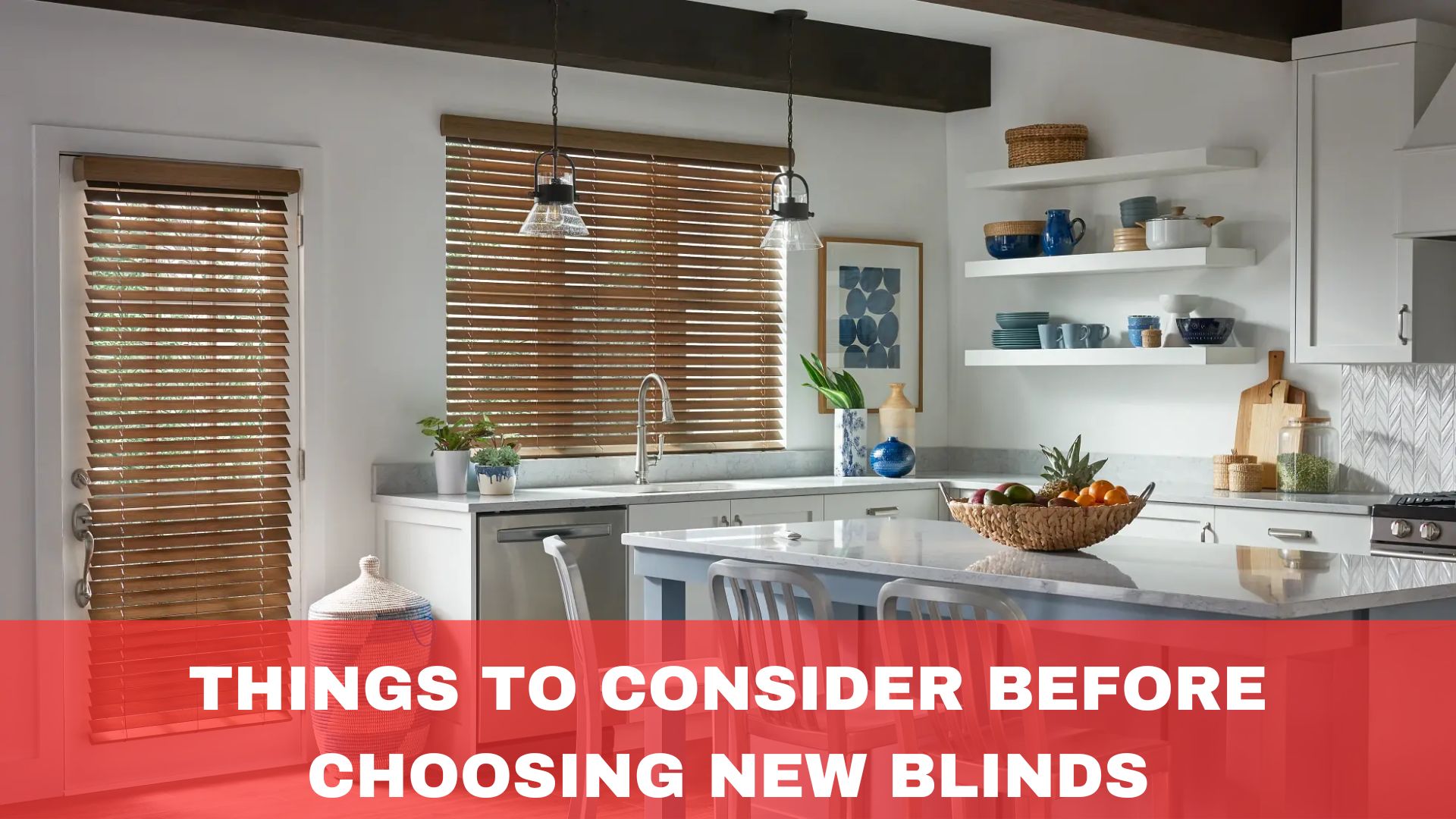Choosing the right blinds can be overwhelming, with so many options available. Making the right choice can lead to better light control, lack of privacy, or high maintenance costs.
This guide covers essential factors to consider before you choose new blinds, ensuring you make an informed decision that enhances your home’s functionality and aesthetics.
1. Budget Planning
Budget planning is essential when choosing new blinds. Start by setting a realistic budget covering the initial purchase and long-term costs. Blinds vary in price based on material, style, and features, so balance quality and aesthetics with your budget.
Calculate the total cost by considering the price per window and multiplying it by the number of windows. Custom sizes and high-end materials can raise costs. Include installation fees, particularly if hiring professionals.
Also, long-term expenses, such as maintenance and replacement, should be considered. While materials like wood or fabric may require more upkeep, durable options like aluminium or PVC are lower-maintenance. Energy-efficient blinds may have a higher initial cost but can reduce energy bills over time.
2. Window Measurements and Placement
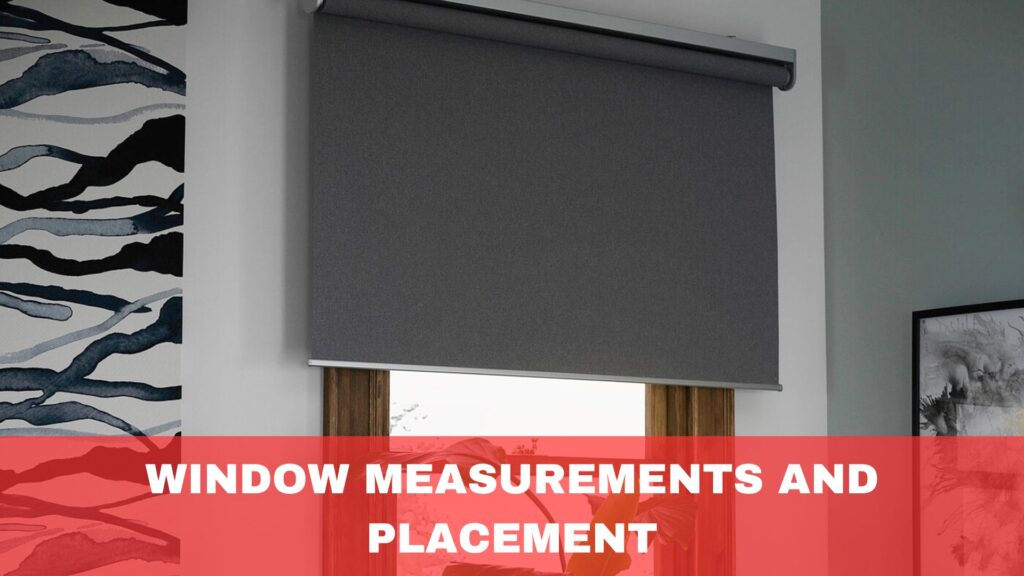
Accurate window measurements and thoughtful placement are essential when choosing new blinds to ensure a perfect fit and optimal functionality. Begin by using a steel tape measure for precision, avoiding fabric tapes that can stretch.
Measure the width at the top, middle, and bottom, recording the smallest measurement for a snug fit. Similarly, measure the height at the left, centre, and right, noting the smallest measurement.
Decide between inside and outside mounts: inside mounts provide a sleek look within the frame, while outside mounts extend beyond the frame for better light control and privacy.
For placement, select blackout or honeycomb shades for bedrooms to enhance sleep quality, and opt for sheer shades or Roman blinds in living areas for style and natural light.
In kitchens and bathrooms, choose moisture-resistant materials like faux wood or aluminium. Adjust blinds based on window direction to effectively manage light and heat.
3. Blind Types
Choosing the right blinds is crucial for both functionality and style. Roller blinds are famous for their simplicity and modern look. They feature a single fabric piece that rolls up, and there are options like blackout for bedrooms and sunscreen for living areas.
Venetian blinds offer adjustable light control through horizontal slats and are available in wood, aluminium, or PVC. Aluminium and PVC are ideal for high-humidity areas. Vertical blinds are perfect for large windows and sliding doors, providing excellent coverage and light control with fabric, PVC, or wood options.
With their elegant pleated fabric, Roman blinds add sophistication to rooms while offering insulation. With their unique structure, honeycomb (cellular) blinds provide exceptional insulation and sound absorption, making them energy-efficient and ideal for reducing noise in any room.
4. Material Options
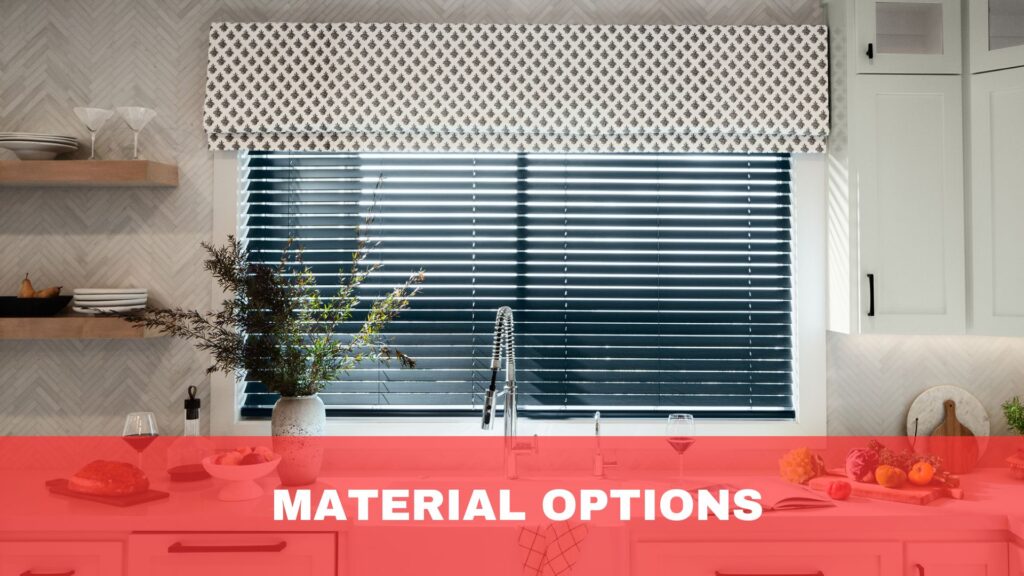
A suitable blind material is essential for functionality, durability, and style. Wooden blinds offer a warm, natural aesthetic and excellent insulation but are unsuitable for high-humidity areas like kitchens or bathrooms.
Faux wood blinds, made from PVC or composite materials, replicate the wood look while resisting moisture and warping, making them versatile for any room. Aluminium blinds are lightweight, durable, and moisture-resistant, ideal for kitchens and bathrooms, and have a sleek, modern appearance, though they may be noisier.
Fabric blinds, such as Roman and roller types, provide a soft look and come in various colours and textures. They offer good light filtering options but require more maintenance. PVC blinds are durable, moisture-resistant, easy to clean, and perfect for high-humidity environments. They are also a cost-effective choice with various design options.
5. Style and Aesthetic Preferences
Selecting blinds that match your style and aesthetic preferences is crucial for achieving a cohesive and attractive home environment. Consider your room’s decor: sleek roller blinds or aluminium Venetian neutral-coloured blinds suit modern, minimalist spaces. In contrast, wooden or faux wood blinds add warmth to traditional or rustic settings.
Roman blinds with bold patterns or rich textures can enhance classic or eclectic interiors. Colour plays a significant role; light-coloured blinds can make a room feel more spacious, while darker shades add sophistication.
Ensure the finish—whether matte, glossy, or textured—complements other elements like furniture and flooring. Functionality should also align with style; for instance, vertical blinds are ideal for large windows and sliding doors, while Venetian blinds offer precise light control.
6. Privacy and Light Control
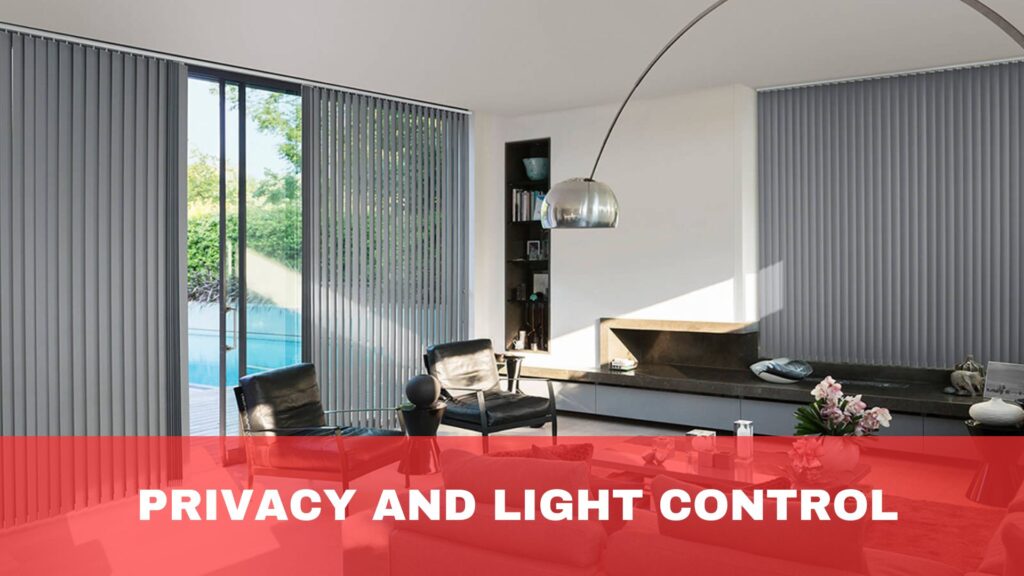
When selecting blinds, balancing privacy and light control is essential for creating a comfortable living environment. Choose blinds that offer adequate privacy for each room’s needs.
Opt for blinds with full coverage or blackout features for bedrooms and bathrooms to ensure complete privacy. Roller blinds, Roman blinds, and vertical blinds can be customised to provide the required level of confidentiality.
Different blinds offer varying degrees of light control. Venetian and vertical blinds allow precise adjustment of light levels by tilting or drawing the slats. Honeycomb blinds provide excellent insulation while controlling light, and fabric blinds can be chosen in opaque or sheer materials to filter light gently.
Consider the room’s function when selecting blinds; for instance, in a living room, you might prefer options that let in natural light while maintaining privacy, while in a home office, more adjustable blinds might be needed to reduce screen glare.
7. Energy Efficiency
Energy efficiency is crucial when choosing blinds, as it affects comfort and utility bills. Opt for blinds with insulating properties like honeycomb (cellular) designs, which trap air and reduce heat transfer, keeping rooms warmer in winter and cooler in summer.
Blinds with adjustable light control, such as Venetian or vertical blinds, help manage natural light, reducing the need for artificial lighting and minimising solar heat gain. Material also matters; fabric or faux wood blinds offer better insulation than standard options.
Additionally, blinds with reflective coatings or UV-blocking features can reduce heat build-up from sunlight, contributing to lower energy costs and enhanced comfort in your home.
8. Maintenance Requirements
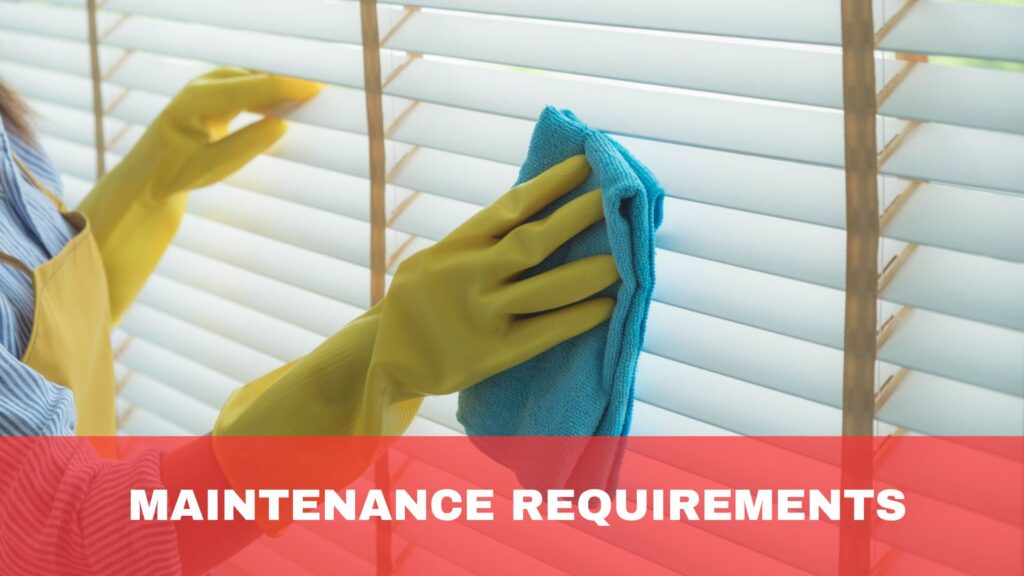
Maintenance requirements are crucial for long-term satisfaction and ease of care when selecting blinds.
Different materials demand varying levels of upkeep. Fabric blinds, such as Roman or roller types, may need regular dusting and occasional washing or dry cleaning to keep them looking fresh. Wooden blinds require dusting and periodic treatment to maintain the finish and prevent warping.
Choose moisture-resistant options like faux wood, aluminium, or PVC blinds for high-humidity areas like kitchens and bathrooms. These materials are easier to clean and less prone to damage from moisture.
Consider the ease of cleaning. Blinds with simple designs and materials that can be easily wiped down or vacuumed are preferable for low maintenance. Blinds that require disassembly for cleaning may involve more effort and time.
9. Installation Options
When choosing new blinds, consider the installation options to ensure a perfect fit and functionality. You can opt for professional installation, which guarantees precision and saves time, especially for complex or large-scale projects.
Alternatively, many blinds come with DIY installation kits, suitable for those comfortable with essential tools and instructions. Ensure you measure your windows accurately, whether opting for inside or outside mounts.
Professional installation often includes a warranty for peace of mind, while DIY offers cost savings. Choose the option that best fits your skills, budget, and the complexity of your window treatments.
10. Safety Features
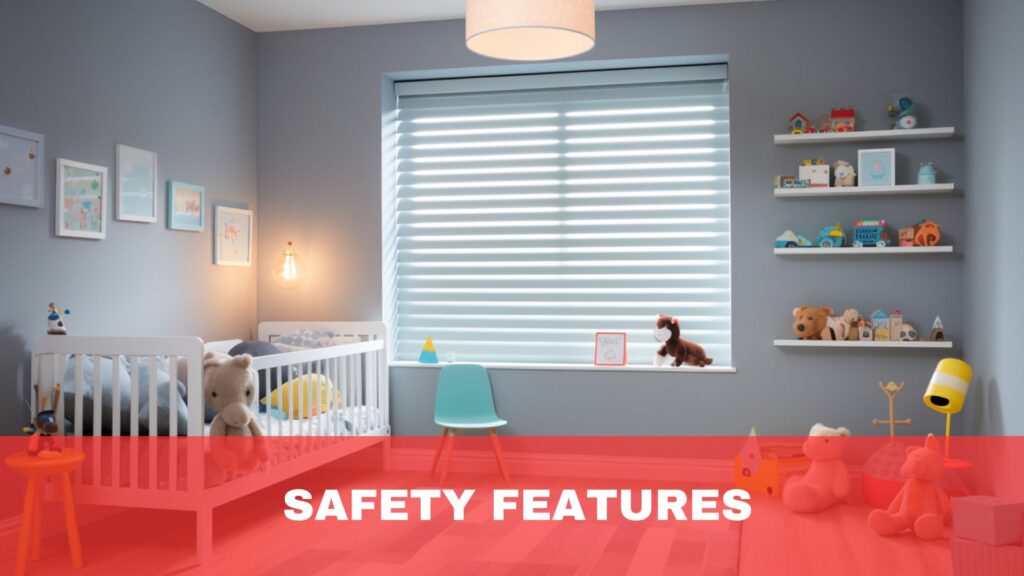
Safety features are paramount when selecting new blinds, especially in homes with children or pets. Opt for cordless blinds or built-in cord tensioners to eliminate strangulation hazards.
Motorised blinds are another safe alternative, allowing remote operation without dangling cords. Additionally, look for blinds that comply with safety standards and certifications. Proper installation also enhances safety by ensuring secure mounting and smooth operation.
Prioritising safety features ensures that your window treatments are functional and safe, providing peace of mind while enhancing your home’s aesthetic.
11. Noise Reduction
When choosing new blinds, consider their noise reduction capabilities, especially if you live in a bustling area or near a busy street.
Certain blinds, like honeycomb (cellular) blinds, have a unique structure that traps air within their cells, providing excellent sound insulation. These blinds can significantly reduce outside noise, creating a quieter and more peaceful indoor environment.
Fabric blinds, particularly those with thicker materials or additional linings, also offer good sound-absorbing properties. Roman blinds and heavy drapes can effectively dampen noise, making them suitable for bedrooms or home offices where quiet is essential.
Additionally, well-fitted blinds covering the entire window can help block sound leaks, enhancing noise reduction. By selecting blinds with sound-insulating features, you can improve the comfort of your living space, making it a serene retreat from external disturbances. Prioritising noise reduction is a practical consideration for enhancing your home’s tranquillity.
12. Supplier Reputation
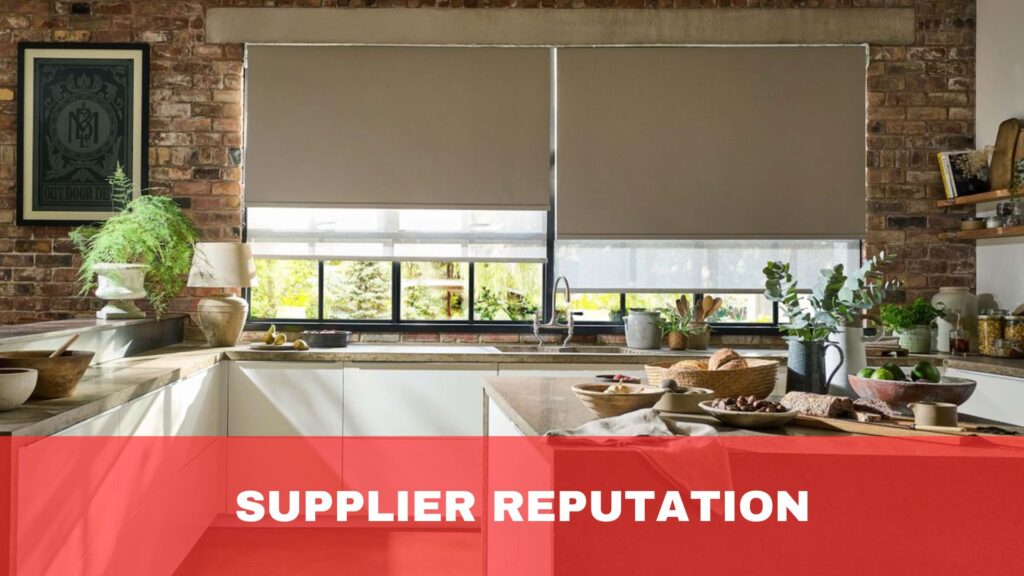
When choosing new blinds, the supplier’s reputation is a crucial factor to consider. A reputable supplier ensures high-quality products, reliable service, and customer satisfaction.
Start by researching suppliers online, reading customer reviews, and checking ratings on trusted platforms. Positive feedback and high ratings indicate a trustworthy supplier with a history of delivering quality products.
Ask for recommendations from friends, family, or interior design professionals with experience in window treatment. Personal referrals can provide insights into the supplier’s reliability and customer service.
Evaluate the supplier’s product range and expertise. A reputable supplier will offer a wide selection of blinds in various styles, materials, and price ranges, along with knowledgeable staff who can guide you in making the best choice for your needs. They should also provide detailed product information, including materials, features, and maintenance requirements.
13. Environmental Impact
Choosing eco-friendly blinds involves several considerations. Opt for sustainable materials like bamboo or recycled aluminium, which reduce waste.
Evaluate the manufacturing process for energy-efficient methods and minimal chemical use, and look for certifications such as GREENGUARD or OEKO-TEX.
Energy-efficient blinds, such as honeycomb (cellular) designs, help improve insulation and lower heating and cooling costs, reducing your carbon footprint.
Select durable blinds that have a longer lifespan to minimise replacements and waste. When disposing of old blinds, choose recyclable or biodegradable options to decrease environmental impact further.
14. Trial Period or Samples
When selecting new blinds, taking advantage of a trial period or requesting samples can be invaluable. Many suppliers offer fabric or material samples, allowing you to assess colour, texture, and quality in your own home.
Additionally, some suppliers provide trial periods, letting you install and test the blinds to ensure they meet your needs. This can help you make a more informed decision and ensure the blinds complement your decor and function as expected.
Utilising samples and trial periods reduces the risk of dissatisfaction and ensures you choose the perfect blinds for your space.
Conclusion
Choosing the right blinds involves considering budget, measurements, material, style, privacy, energy efficiency, maintenance, and safety.
You can select blinds that enhance your home’s functionality and aesthetics by carefully evaluating these aspects. Visit Into Blinds for more information on the perfect blinds for your home.

